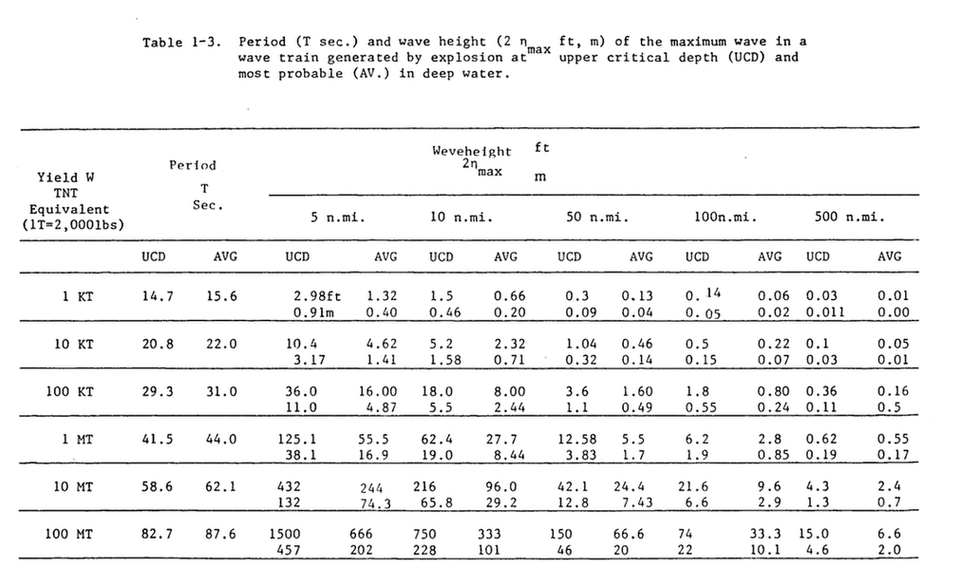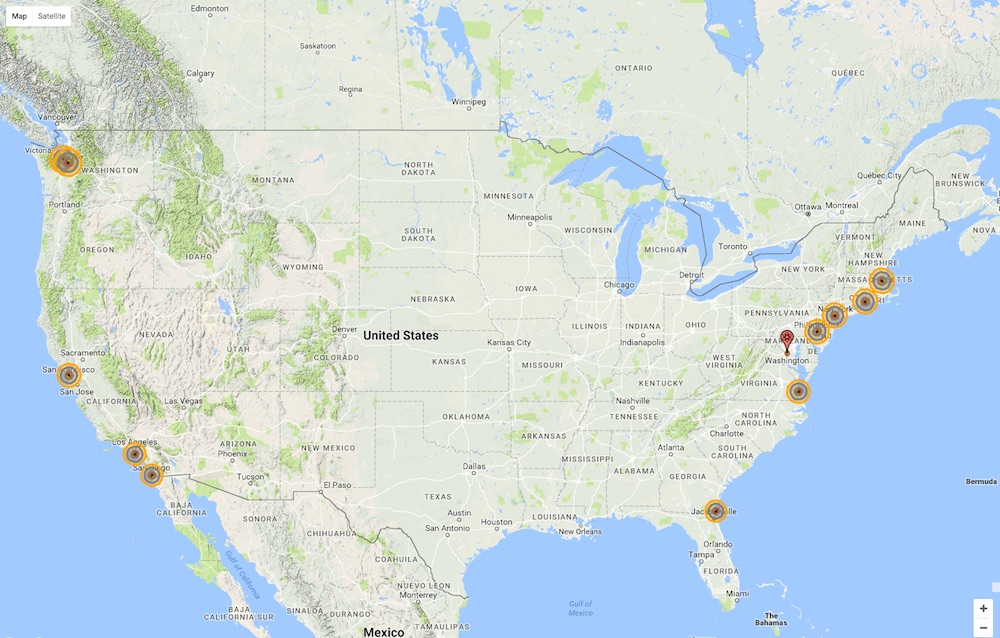March 05, 2017
Status Six in the News Again
Well, not really, Next Big Future has a piece on this nasty Russian weapon that we've discussed here before.


Most of the articles linked in the NBF post are from last year and the post focuses on the tsunami aspect of the weapon, which is not likely to be that much of a strategic threat.
For those unfamiliar with this most clickbaity of weapons, "Status 6" is a new Russian torpedo carrying a nuclear warhead. Nothing new there except that this torpedo is over 5 feet wide and nearly 80 feet long and the warhead is between 50 and 150 megatons, with 100 megatons being the general consensus. The torpedo is big enough to carry the 100 megaton "Tsar Bomba" or RDS 220 physics package which was tested at half yield back in the 1960s producing 57 megatons of 'splody and cracking windows over 200 miles away.
It is designed to be fired into harbors, rendering them unuseable due to cratering and radioactive contamination. In the semi-enclosed waters of San Fransisco and San Diego bays, Puget Sound and possibly the Chesapeake Bay seiche effects would likely result in impressive wave heights, but the energies released by this weapon pale in comparison to what an earthquake releases and you can't just blow one up offshore and devastate the coast.
However, the effect is not nonexistant.

Table from here. A 22-74 foot wave 100 miles away is kind of scary.
The bigger concern is the blast and radiation, even if not salted with cobalt 60 or something a high yield version of the old RDS220 would be horrifically radioactive. From the Nuclear Weapon Archive article...
The effect of this bomb at full yield on global fallout would have been tremendous. It would have increased the world's total fission fallout since the invention of the atomic bomb by 25%.
Since the effects of a ground burst are orders of magnitude worse for radioactive contamination than an airburst, the effect on the targeted harbors and those downwind is likely to be so dreadful that cobalt is unnecessary.
There are 2 operational carriers of this delightful piece of technology, one is an experimental submarine that has one monstrous torpedo tube for this weapon. There is also a converted cruise missile submarine that reportedly has six tubes, though it is a combination spy- sub and work boat. In a year or so, the purpose built Khabarovsk comes into service, which will carry at least 6 tubes.
Using Alex Wellerstien's Nukemap simulator I looked at what 1 sub (assuming six tubes each) on each coast could do...

Assume 1 is hitting Pearl Harbor, 2 were used n Puget Sound because of the geography, the SSBN base OR the cities can be hit, but not both. Targets are major commercial ports and the most important naval bases. I assumed that no subs were in the gulf of Mexico, but they do have one addition sub to shoot at New Orleans. Additionally, certain Inland ports like Sacramento or Albany might be fairly easy shots for this weapon if maximum fallout is desired.
..the thing that is most striking is the sheer size of the affected areas, even not taking into account the fallout. The fireball that plasmaglobe of utter destruction in the center of a nuclear blast is 10 miles across. The orange area is where fires would be started on a clear day and the lightest shade of grey is the 1.5 psi area where all the windows are blown out, the darker shades of grey has most homes demolished and inside that it's...unpleasant.
For scale I nuked Washington DC with a B-83, the most powerful weapon in the U.S. arsenal. It doesn't really show up at this scale.
Of course if the Russians actually used these, they'd be using their other nuclear weapons too, but the sheer amount if devastation caused by 11 of these things on CONUS ports is kind of sobering.
Posted by: The Brickmuppet at
11:40 PM
| Comments (1)
| Add Comment
Post contains 662 words, total size 6 kb.
<< Page 1 of 1 >>
26kb generated in CPU 0.0167, elapsed 0.0938 seconds.
67 queries taking 0.0847 seconds, 209 records returned.
Powered by Minx 1.1.6c-pink.
67 queries taking 0.0847 seconds, 209 records returned.
Powered by Minx 1.1.6c-pink.









